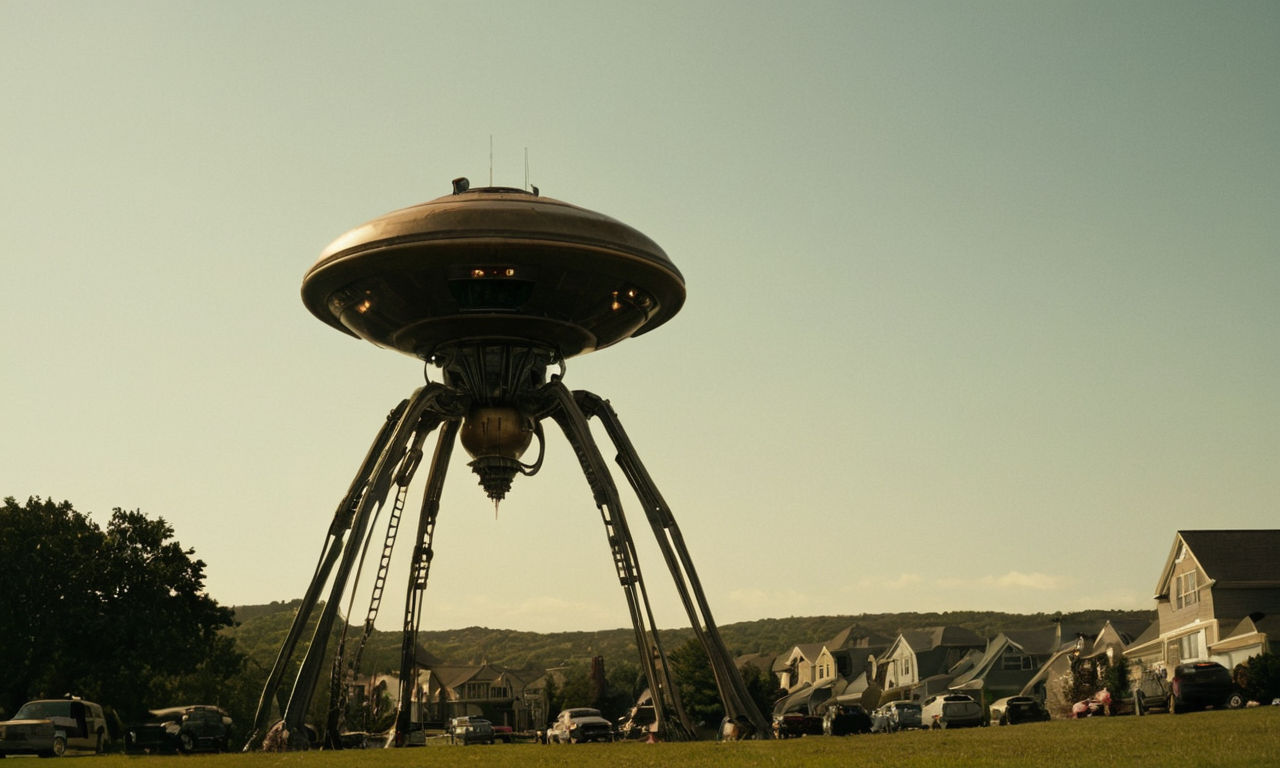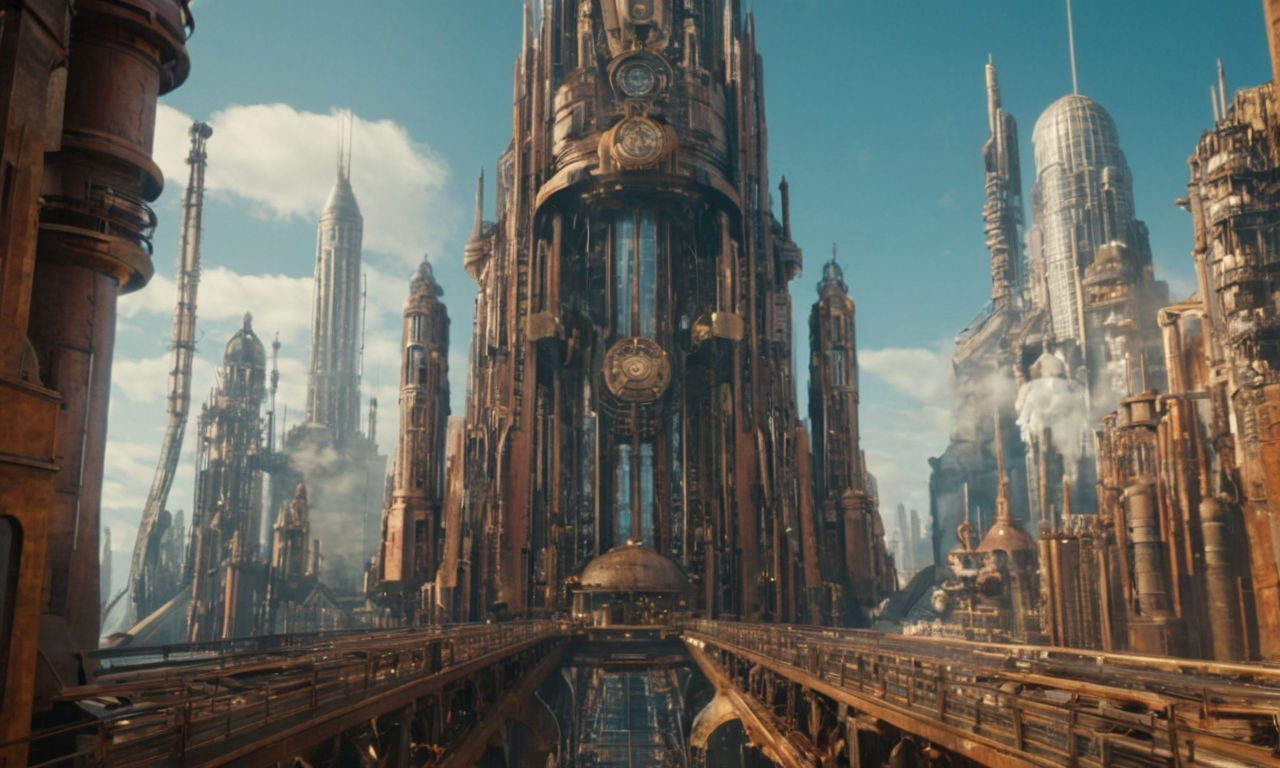Introduction
Welcome to the exploration of Woking with H.G. Wells, where we unveil the intriguing connection between the esteemed author and his iconic masterpiece, The War of the Worlds. Join us on this journey through the historical streets of Woking to uncover the inspiration behind one of the most famous alien invasion narratives in literary history. We will delve into the rich heritage and imaginative legacy that link H.G. Wells to this classic science fiction tale.
Overview of H.G. Wells and The War of the Worlds
H.G. Wells, a pioneer in the science fiction genre, crafted The War of the Worlds, a gripping narrative that captured the imagination of readers worldwide. Published in 1898, this novel follows the invasion of Earth by ruthless Martians, showcasing Wells' visionary storytelling and evocative prose. As we embark on our exploration of Woking, we set the stage to understand how this quaint English town influenced Wells' creation and became an integral part of his literary legacy.
H.G. Wells: A Literary Biography
Early Life and Influences
Diving into the early years of H.G. Wells, we uncover the formative experiences that shaped his trajectory as a writer. Born in 1866 in Bromley, Kent, Wells faced challenges early in life, yet his insatiable curiosity and keen intellect propelled him towards a career in writing. Influenced by prominent scientific thinkers of his time, including Darwin and Huxley, Wells developed a deep fascination with evolutionary theory and the possibilities of science.
Career and Notable Works
Throughout his prolific career, H.G. Wells produced a multitude of literary works that transcended the boundaries of traditional storytelling. Beyond The War of the Worlds, Wells penned influential novels such as "The Time Machine," "The Invisible Man," and "The Island of Doctor Moreau," each contributing to his reputation as a visionary author. His exploration of social issues, scientific advancements, and the human condition set him apart as a pioneer in the realm of science fiction literature, influencing generations of writers to come.
The War of the Worlds: Plot Overview

In The War of the Worlds, H.G. Wells unfolds a narrative of otherworldly invasion and human resilience in the face of unimaginable adversity. The novel traces the Martian incursion into England, painting a vivid picture of chaos and survival as humanity confronts a superior alien force. Through vivid descriptions and gripping suspense, Wells captivates readers with a tale that goes beyond mere science fiction, delving into themes of colonialism, evolution, and the fragility of human civilization.
Join us as we continue to unravel the enthralling connection between H.G. Wells, The War of the Worlds, and the enchanting town of Woking, where history, imagination, and creativity converge to shape one of the most enduring stories in the realm of science fiction.
Synopsis of the Novel
"The War of the Worlds" by H.G. Wells is a classic science fiction novel that narrates the account of an alien invasion on Earth. The story unfolds as Martians land in England, utilizing advanced technology to wreak havoc on humanity. As the Martians display superior weaponry and intelligence, Earth struggles to combat the extraterrestrial threat. The novel not only captivates readers with its thrilling narrative but also delves into deeper themes of imperialism, evolution, and the vulnerability of human civilization.
Key themes explored in the book include the concept of foreign invasion, technological superiority, and the fragility of human dominance on Earth. By depicting the Martians as highly evolved beings with destructive capabilities beyond human comprehension, Wells prompts readers to reflect on the consequences of unchecked scientific progress and the inevitable clash between civilizations.
"The War of the Worlds" holds significant importance in the literary world as one of the earliest works to introduce the concept of alien invasions, influencing the science fiction genre for generations to come. Its imaginative storytelling, vivid descriptions, and thought-provoking themes have cemented its place as a timeless masterpiece in the realm of speculative fiction.
Woking: The Influence on H.G. Wells
Connection to Woking
Woking, a town in Surrey, England, holds a special place in the life and works of H.G. Wells. The area served as a significant source of inspiration for Wells, particularly in crafting the setting for "The War of the Worlds." Wells resided in Woking during the late 19th century, drawing from the town's landscape and atmosphere to create a realistic backdrop for his science fiction narrative.
The tranquility of Woking's suburban life juxtaposed with the sudden intrusion of Martian tripods in Wells' novel mirrors the author's own observations of the town's transformation during the industrial era. This contrast between the idyllic English countryside and the chaos of extraterrestrial invasion adds a layer of realism to the story and reflects Wells' keen sense of social commentary.

Landmarks and Locations
Several landmarks in Woking are directly linked to H.G. Wells' depiction of alien invasion in "The War of the Worlds." One such notable location is Horsell Common, a large heathland that features prominently in the novel as the initial landing site of the Martian spacecraft. The description of the Martian cylinders emerging from the common aligns closely with Wells' observations of the area's terrain and geography.
Additionally, the iconic town center of Woking, including the railway station and surrounding streets, provided Wells with the urban backdrop necessary to convey the panic and chaos that ensues following the Martian invasion. These recognizable landmarks serve as tangible connections between the fictional world of "The War of the Worlds" and the real-life settings that inspired Wells' imagination.
Literary History Tour: Exploring Woking
Walking Tour Itinerary
For fans of H.G. Wells and enthusiasts of science fiction, exploring Woking through a literary history tour offers a unique opportunity to immerse oneself in the world of "The War of the Worlds." A proposed itinerary could include:
Horsell Common: Begin the tour at Horsell Common, where visitors can envision the arrival of the Martian cylinders and appreciate the natural surroundings that influenced Wells' descriptions.
Woking Town Centre: Visit the town center to see the landmarks described in the novel, such as the railway station and streets where the first encounters with the Martians took place.
Wells' Former Residence: Explore the neighborhood where H.G. Wells lived during his time in Woking, gaining insight into the author's daily life and creative process.
Local Museums: Conclude the tour with a visit to local museums or exhibitions that showcase the history of Woking and its connection to H.G. Wells, offering a comprehensive view of the town's impact on literature and science fiction.
Interactive Experience
Embark on an immersive journey through Woking by retracing the steps of the legendary H.G. Wells. Walking through the very streets that inspired his groundbreaking work, such as The War of the Worlds, visitors can engage with the legacy of this iconic writer in a unique and captivating way.
During the tour, participants have the opportunity to witness the landmarks and locations that played a pivotal role in Wells' imaginative process. From the Martian invasion sites to the serene landscapes that sparked his creativity, each step unveils layers of literary history that continue to captivate audiences worldwide. Enthusiasts can visualize scenes from the novel coming to life before their eyes, offering a profound connection to the mind of one of the foremost science fiction visionaries.

Key points to explore during the interactive tour in Woking:
The location where the Martian cylinders first landed, setting the stage for the invasion.
The significance of Woking's architecture and surroundings in shaping Wells' futuristic narrative.
Engaging with local experts who provide historical context and enrich the experience with intriguing anecdotes about Wells and his creative process.
Legacy of H.G. Wells
Delve into the enduring legacy of H.G. Wells and his profound impact on the science fiction genre. The visionary works of Wells have left an indelible mark on literary history, pioneering a new wave of speculative fiction that continues to resonate with audiences across generations.
Impact on Science Fiction
H.G. Wells' contributions to science fiction are immeasurable, with his writings serving as a cornerstone for the genre. His ability to foresee technological advancements and explore the complexities of human nature through futuristic storytelling has inspired countless authors and filmmakers. From time travel to extraterrestrial life, Wells' innovative concepts set a high standard for imagination and intellectual discourse within the sci-fi realm.
In the modern era, the influence of H.G. Wells can be seen in the works of renowned creators who have honed their craft under his profound influence. Authors, filmmakers, and artists draw inspiration from Wells' unconventional ideas, pushing the boundaries of speculative fiction and challenging the status quo of the genre.
Conclusion
In conclusion, the connection between Woking and H.G. Wells is a testament to the enduring impact of literary history on cultural landscapes. By exploring Woking through the lens of Wells' imagination, readers gain a deeper understanding of the creative process behind The War of the Worlds and its significance in shaping the science fiction genre.
Recap of Woking's Connection to H.G. Wells
Revisiting Woking offers a unique opportunity to immerse oneself in the world of H.G. Wells and experience firsthand the settings that inspired his visionary tales. From the bustling city center to the tranquil countryside, each location tells a story of innovation and imagination that continues to resonate with audiences worldwide. Embark on your own literary journey through Woking and uncover the enduring legacy of one of science fiction's greatest pioneers.



